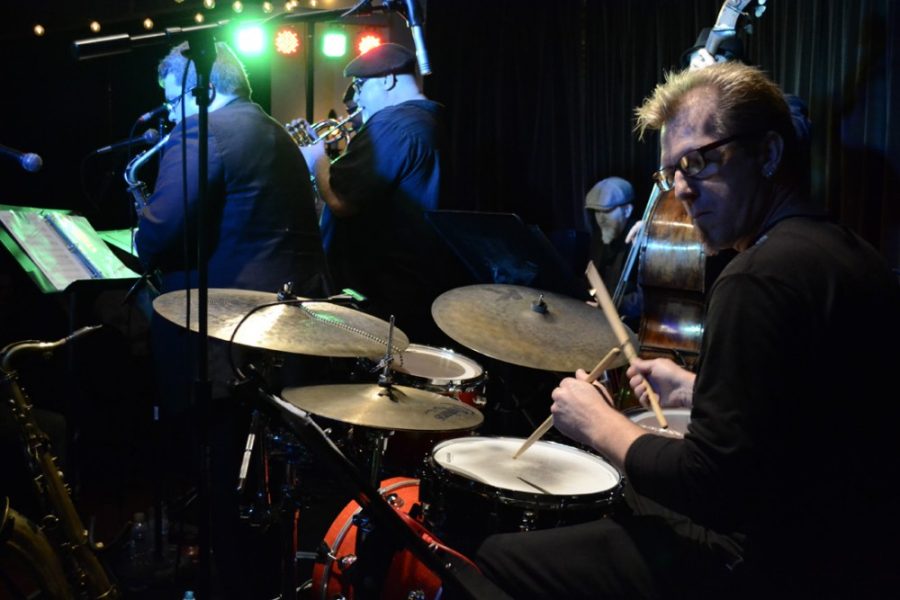The first annual Tucson Jazz Festival is bringing big names and local beginners together in a 13-day downtown concert series.
After over a year of advertising, scheduling, booking, promoting and general festival preparation, the Tucson Jazz Festival opened the doors to their first concert last Friday at the Fox Tucson Theatre. Stretching from Jan. 16-28, the festival includes 16 concerts featuring jazz musicians of all different styles, eras and walks of life. From the high school students that make up the Tucson Jazz Institute Ellington Band; to the duo of Gabriel Espinosa, a Mexican bassist, and Hendrick Meurkens, a German harmonica player and vibraphonist; to the partnership between the UA Jazz Sextet, the Jeff Haskell Trio, and clarinetist Dave Bennett — there is something for everyone.
“This is a historic event that will go on for a long time,” said Henry Barajas, the community engagement director for the festival. “This is put together by people who appreciate jazz on every kind of level.”
The festival was born in January 2014 when Tucson Mayor Jonathan Rothschild and local lawyer Elliot Glicksman approached Yvonne Ervin with a question: Did she think she would be able to put together a massive festival of jazz music for next January?
Ervin had been a big part of the Tucson jazz scene for years. As a true jazz lover, she ran the Tucson Jazz Society for nine years and volunteered for eight before that, awarded scholarships to up-and-coming jazz musicians as a part of the Tucson Jazz Music Foundation and is the current editor of popular jazz magazine Hot House.
“If we can raise $100,000 in six weeks, I’ll quit my job at the university, and we’ll do it,” Ervin told Rothschild and Glicksman.
They began going to people for sponsorships, and every organization they talked to said “yes,” showing how much community support was behind the creation of a jazz festival in Tucson. Ervin and her team were able to find sponsors to cover $200,000 of the festival, and, after switching to part-time at the UA, she became executive director of the festival.
Ervin and her team wanted to create a festival for everyone, and they definitely succeeded. With all of the different styles and experience levels represented, there is something for every jazz lover. On Monday, in celebration of Martin Luther King Jr. Day, there were two free outdoor concerts at the MLK and Connect Stages downtown featuring 12 performances by local jazz artists that stretched from 11 a.m. to 5 p.m.
One of the stand-out performances of the first few days of the festival was Dmitri Matheny’s group. Matheny is a flugelhornist and former Tucson resident whose career began with a scholarship from the Tucson Jazz Music Foundation. With the money, he attended college and honed his skills, and now he’s come back to return the favor.
Matheny led a six-person band in a concert on Sunday night at the Hotel Congress Copper Room. The venue was small, with only 140 seats total, but almost all were taken and the limited space gave the performance an intimate atmosphere. The concert, titled “Jazz Noir,” was a collection of music influenced by or taken from classic film noir.
“It’s that feel of the cop on the beat, the hardboiled detective,” Matheny told the audience. “It’s a saxophone under a street lamp in the fog.”
The band was made up of Matt Rollings on piano, T-Bone Sistrunk on bass, John Lewis on drums, Andrew Gross and Charles McNeal on saxophone and Matheny on flugelhorn as the band leader.
They played various selections. Some were classic staples of the jazz noir collection such as “Stormy Weather,” while others were original pieces, such as the title track on Matheny’s new album, “Sagebrush Rebellion.” Each piece was unique in style and flavor, and audience members could never guess what was coming next.
One of the most interesting pieces Matheny’s group performed was “Crime Scenes.” An original composition, “Crime Scenes” was a story told in pieces by music and narration working in sync. It was the story of the dark side of San Francisco, Calif., where criminals and police roam the streets, each trying to get rid of the other. The story progressed through the tempo changes and different melodies in the music, and in each segment, Matheny would poetically narrate the actions taking place in his tale. It was definitely unique, with mystery, suspense, thrills, danger and justice all packed into one new-age piece that felt classic.
Through “Crime Scenes” and the entire concert, Matheny’s group mixed the old with the new, the somber with the suspenseful and the fun with the reflective.
With the outpouring of artistic talent, incredible community support and dedication from the people behind the scenes, the Tucson Jazz Festival has positioned itself to become a staple of January in Tucson for years to come.
For a complete schedule of events and to purchase tickets, visit tucsonjazzfestival.org.
_______________
Follow Victoria Pereira on Twitter.









